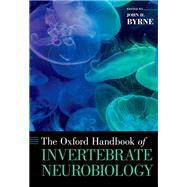Invertebrates have proven to be extremely useful model systems for gaining insights into the neural and molecular mechanisms of sensory processing, motor control and higher functions such as feeding behavior, learning and memory, navigation, and social behavior. A major factor in their enormous contributions to neuroscience is the relative simplicity of invertebrate nervous systems. In addition, some invertebrates, primarily the molluscs, have large cells, which allow analyses to take place at the level of individually identified neurons. Individual neurons can be surgically removed and assayed for expression of membrane channels, levels of second messengers, protein phosphorylation, and RNA and protein synthesis. Moreover, peptides and nucleotides can be injected into individual neurons. Other invertebrate model systems such as Drosophila and Caenorhabditis elegans offer tremendous advantages for obtaining insights into the neuronal bases of behavior through the application of genetic approaches.
The Oxford Handbook of Invertebrate Neurobiology reviews the many neurobiological principles that have emerged from invertebrate analyses, such as motor pattern generation, mechanisms of synaptic transmission, and learning and memory. It also covers general features of the neurobiology of invertebrate circadian rhythms, development, and regeneration and reproduction. Some neurobiological phenomena are species-specific and diverse, especially in the domain of the neuronal control of locomotion and camouflage. Thus, separate chapters are provided on the control of swimming in annelids, crustaea and molluscs, locomotion in hexapods, and camouflage in cephalopods. Unique features of the handbook include chapters that review social behavior and intentionality in invertebrates. A chapter is devoted to summarizing past contributions of invertebrates to the understanding of nervous systems and identifying areas for future studies that will continue to advance that understanding.








